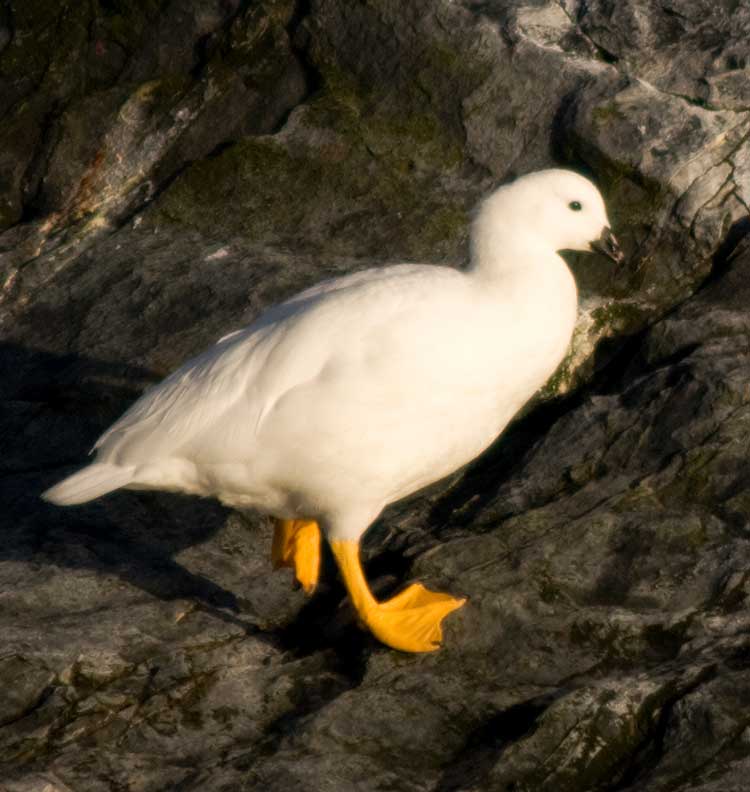
Chloephaga hybrida (*)
Superregnum: Eukaryota
Regnum: Animalia
Subregnum: Eumetazoa
Cladus: Bilateria
Cladus: Nephrozoa
Superphylum: Deuterostomia
Phylum: Chordata
Cladus: Craniata
Subphylum: Vertebrata
Infraphylum: Gnathostomata
Superclassis: Tetrapoda
Cladus: Reptiliomorpha
Cladus: Amniota
Classis: Reptilia
Cladus: Eureptilia
Cladus: Romeriida
Subclassis: Diapsida
Cladus: Sauria
Infraclassis: Archosauromorpha
Cladus: Crurotarsi
Divisio: Archosauria
Subsectio: Ornithodira
Subtaxon: Dinosauromorpha
Cladus: Dinosauria
Ordo: Saurischia
Cladus: Eusaurischia
Cladus: Theropoda
Cladus: Neotheropoda
Infraclassis: Aves
Cladus: Euavialae
Cladus: Avebrevicauda
Cladus: Pygostylia
Cladus: Ornithothoraces
Cladus: Euornithes
Cladus: Ornithuromorpha
Cladus: Ornithurae
Cladus: Carinatae
Parvclassis: Neornithes
Cohors: Neognathae
Cladus: Galloanseres
Ordo: Anseriformes
Familia: Anatidae
Subfamilia: Tadorninae
Genus: Chloephaga
Species: Chloephaga hybrida
Name
Chloephaga hybrida (Molina, 1782)
Original combination: Anas hybrida
References
Molina, J.I. 1782. Saggio sulla storia naturale de Chili. Stamperia di S. Tomaso d'Aquino: Bologna. 367 pp. Reference page. Original description p.241 p.344
Vernacular names
čeština: Husice patagonská
Deutsch: Tanggans
English: Kelp Goose
español: cauquén caranca o cauquén marino
français: Ouette marine
magyar: Szirti lúd
The kelp goose (Spanish: Caranca or Cauquén Marino), Chloephaga hybrida, is a member of the duck, goose and swan family Anatidae. It is in the shelduck subfamily Tadorninae. It can be found in the Southern part of South America - mainly in Patagonian Chile, Tierra del Fuego, and the Falkland Islands.
Habitat
Kelp geese inhabit Chile's southern half to the eastern tip of Tierra del Fuego and the Falkland Islands. They habitat rocky coasts around their food sources.
Description
Female on left, male on right
Males are a white color, with a black beak, and yellow feet. The females are dark brown, with transverse gray lines on the chest, and yellow feet.[2][3]
Behavior
Kelp geese generally have clutches of 2–7 eggs. They prefer to hide their eggs in long grass. The eggs hatch about a month later.
There are about 15,000 breeding pairs in existence.[3]
Ecology
Kelp geese are noted for only eating kelp and will migrate along the coast of South America in order to find kelp, hence the name 'kelp geese'.
Trivia
In the Falkland Islands and Argentina there are kelp geese stamps.
Female on East Falkland
A pair on East Falkland
Two females, one male, and two juveniles on Chiloé, Chile.
References
BirdLife International (2016). "Chloephaga hybrida". IUCN Red List of Threatened Species. 2016: e.T22679978A92837056. doi:10.2305/IUCN.UK.2016-3.RLTS.T22679978A92837056.en. Retrieved 12 November 2021.
"Birds of the Falkland Islands: Kelp Goose". Retrieved 2007-05-09.
"Kelp Goose". Archived from the original on 2007-05-03. Retrieved 2007-05-09.
Retrieved from "http://en.wikipedia.org/"
All text is available under the terms of the GNU Free Documentation License

